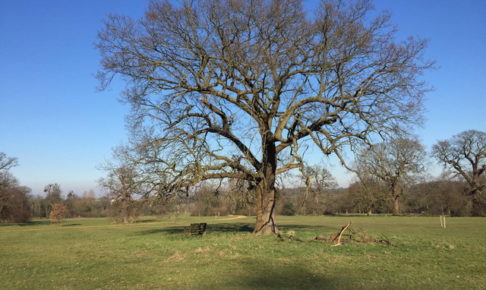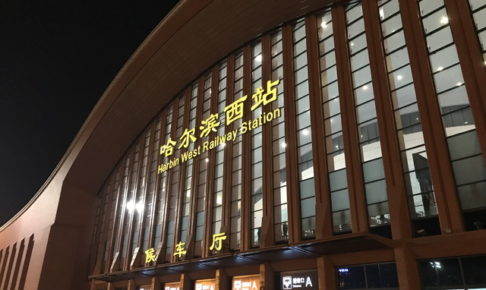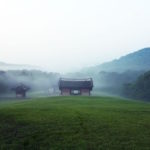- This topic is empty.
- 投稿者投稿
Albertdet
ゲストGeorgefoulp
ゲストJamesSnors
ゲストCharlesSah
ゲストChrislurge
ゲストColinExaws
ゲストJamestaf
ゲストTree-covered mountains rise behind a pile of trash, children run through the orange haze of a dust storm, and a billboard standing on parched earth indicates where the seashore used to be before desertification took hold. These striking images, exhibited as part of the Right Here, Right Now Global Climate Summit, show the devastating effects of climate change.
[url=https://kra34c.cc]Площадка кракен[/url]
The summit, held at the University of Oxford in the UK and supported by UN Human Rights (OHCHR), aims to reframe climate change as a human rights crisis and spotlight climate solutions. It works with everyone from policymakers to artists to get the message across.“Photographers document the human rights impacts of climate change, helping to inform the public and hold governments and businesses accountable,” said Volker Turk, UN High Commissioner for the OHCHR, via email. “The Right Here, Right Now Global Climate Summit shows the power of collective action — uniting storytellers, scientists, indigenous leaders, and others to advance climate solutions rooted in human rights.”
Coinciding with World Environment Day on June 5, the exhibition — titled “Photography 4 Humanity: A Lens on Climate Justice” — features the work of 31 photographers from across the globe, all documenting the effects of global warming and environmental pollution on their own communities.
Climate change disproportionately affects vulnerable populations around the world. Despite emitting far fewer greenhouse gases, low-income nations are suffering the most from extreme weather events and have fewer resources to adapt or recover.
Photographs at the exhibition show the effects of desertification, flooding and plastic pollution. A black and white image shows the ruins of a house in West Bengal, India, sloping towards the Ganges River, with the owner sitting alongside. Riverbank erosion is degrading the environment and displacing communities in the area. Photographer Masood Sarwer said in a press release that the photo depicts the “slow violence” of climate change: “These are not sudden disasters, but slow-moving, relentless ones — shaping a new category of environmental refugees.”Another photo, taken by Aung Chan Thar, shows children fishing for trash in Inle Lake, Myanmar. The lake was once a pristine natural wonder but now faces the growing threat of plastic pollution. “This image of children cleaning the water symbolizes the importance of education and collective action in preserving our environment for a sustainable future,” he said.
Organizers hope that the exhibition will help to humanize the climate crisis. “Our mission is to inspire new perspectives through photography,” said Pauline Benthede, global vice president of artistic direction and exhibitions at Fotografiska, the museum of photography, art and culture that is curating the exhibition at the summit. “It draws attention to the human rights issue at the heart of global warming, which affects both the world’s landscapes and the people that live within them.”
“Photography is the most influential and inclusive art form of our times and has the power to foster understanding and inspire action,” she added.
MichaelErodo
ゲストNASA scientists are in a state of anxious limbo after the Trump administration proposed a budget that would eliminate one of the United States’ top climate labs – the NASA Goddard Institute for Space Studies, or GISS – as a standalone entity.
[url=https://kra34c.cc]kra35.cc[/url]
In its place, it would move some of the lab’s functions into a broader environmental modeling effort across the agency.Career specialists are now working remotely, awaiting details and even more unsure about their future at the lab after they were kicked out of their longtime home in New York City last week. Closing the lab for good could jeopardize its value and the country’s leadership role in global climate science, sources say.
“It’s an absolute sh*tshow,” one GISS scientist said under condition of anonymity because they were not authorized to speak to the media. “Morale at GISS has never been lower, and it feels for all of us that we are being abandoned by NASA leadership.”
“We are supposedly going to be integrated into this new virtual NASA modeling institute, but (we have) no idea what that will actually look like,” they said.
NASA is defending its budget proposal, with a nod toward the lab’s future.
“NASA’s GISS has a significant place in the history of space science and its work is critical for the Earth Science Division, particularly as the division looks to the future of its modeling work and capabilities,” NASA spokesperson Cheryl Warner said in a statement.“Fundamental contributions in research and applications from GISS directly impact daily life by showing the Earth system connections that impact the air we breathe, our health, the food we grow, and the cities we live in,” Warner said.
GISS has a storied history in climate science on the global scale.
James Hansen, a former director, first called national attention to human-caused global warming at a Senate hearing during the hot summer of 1988. The lab, founded in 1961, is still known worldwide for its computer modeling of the planet that enable scientists to make projections for how climate change may affect global temperatures, precipitation, extreme weather events and other variables.
JamesPar
ゲストJimmywhows
ゲスト[url=https://555rr1.net/game/]555 rr app[/url]
AngeloCal
ゲストTimothyDah
ゲストJan Beutel was half-watching a live stream of Kleines Nesthorn, a mountain peak in the Swiss Alps, when he realized its cacophony of creaks and rumbles was getting louder. He dropped his work, turned up the sound and found himself unable to look away.
[url=https://kra34c.cc]Площадка кракен[/url]
“The whole screen exploded,” he said.Beutel, a computer engineer specializing in mountain monitoring, had just witnessed a glacier collapse. On May 28, an avalanche of millions of tons of ice and rock barreled down the slope, burying Blatten, a centuries-old village nestled in the valley below.
Local authorities had already evacuated the village after parts of the mountain had crumbled onto the glacier; a 64-year old man believed to have stayed remains missing.
But no one expected an event of this magnitude.
Successive rock avalanches onto the glacier increased the pressure on the ice, causing it to melt faster and the glacier to accelerate, eventually destabilizing it and pushing it from its bed. The collapse was sudden, violent and catastrophic. “This one just left no moment to catch a breath,” Beutel said.
The underlying causes will take time to unravel. A collapse of this magnitude would have been set in motion by geological factors going back decades at least, said Matthias Huss, a glaciologist at the Swiss university ETH Zurich.But it’s “likely climate change is involved,” he said, as warming temperatures melt the ice that holds mountains together. It’s a problem affecting mountains across the planet.
People have long been fascinated with mountains for their dramatic beauty. Some make their homes beneath them — around 1 billion live in mountain communities — others are drawn by adventure, the challenge of conquering peaks.
These majestic landscapes have always been dangerous, but as the world warms, they are becoming much more unpredictable and much deadlier.
“We do not fully understand the hazard at the moment, nor how the dangers are changing with climate change,” said David Petley, an Earth scientist at the University of Hull in England.
PeterLom
ゲストDeep below the surface of the ground in one of the driest parts of the country, there is a looming problem: The water is running out — but not the kind that fills lakes, streams and reservoirs.
[url=https://kra34c.cc]кракен вход[/url]
The amount of groundwater that has been pumped out of the Colorado River Basin since 2003 is enough to fill Lake Mead, researchers report in a study published earlier this week. Most of that water was used to irrigate fields of alfalfa and vegetables grown in the desert Southwest.No one knows exactly how much is left, but the study, published in the journal Geophysical Research Letters, shows an alarming rate of withdrawal of a vital water source for a region that could also see its supply of Colorado River water shrink.
“We’re using it faster and faster,” said Jay Famiglietti, an Arizona State University professor and the study’s senior author.
In the past two decades, groundwater basins – or large, underground aquifers – lost more than twice the amount of water that was taken out of major surface reservoirs, Famiglietti’s team found, like Mead and Lake Powell, which themselves have seen water levels crash.
The Arizona State University research team measured more than two decades of NASA satellite observations and used land modeling to trace how groundwater tables in the Colorado River basin were dwindling. The team focused mostly on Arizona, a state that is particularly vulnerable to future cutbacks on the Colorado River.
Groundwater makes up about 35% of the total water supply for Arizona, said Sarah Porter, director of the Kyl Center for Water Policy at Arizona State University, who was not directly involved in the study.The study found groundwater tables in the Lower Colorado River basin, and Arizona in particular, have declined significantly in the last decade. The problem is especially pronounced in Arizona’s rural areas, many of which don’t have groundwater regulations, and little backup supply from rivers. With wells in rural Arizona increasingly running dry, farmers and homeowners now drill thousands of feet into the ground to access water.
Scientists don’t know exactly how much groundwater is left in Arizona, Famiglietti added, but the signs are troubling.
“We have seen dry stream beds for decades,” he said. “That’s an indication that the connection between groundwater and rivers has been lost.”
AndrewAntig
ゲストDeep below the surface of the ground in one of the driest parts of the country, there is a looming problem: The water is running out — but not the kind that fills lakes, streams and reservoirs.
[url=https://kra34c.cc]kraken зеркало[/url]
The amount of groundwater that has been pumped out of the Colorado River Basin since 2003 is enough to fill Lake Mead, researchers report in a study published earlier this week. Most of that water was used to irrigate fields of alfalfa and vegetables grown in the desert Southwest.No one knows exactly how much is left, but the study, published in the journal Geophysical Research Letters, shows an alarming rate of withdrawal of a vital water source for a region that could also see its supply of Colorado River water shrink.
“We’re using it faster and faster,” said Jay Famiglietti, an Arizona State University professor and the study’s senior author.
In the past two decades, groundwater basins – or large, underground aquifers – lost more than twice the amount of water that was taken out of major surface reservoirs, Famiglietti’s team found, like Mead and Lake Powell, which themselves have seen water levels crash.
The Arizona State University research team measured more than two decades of NASA satellite observations and used land modeling to trace how groundwater tables in the Colorado River basin were dwindling. The team focused mostly on Arizona, a state that is particularly vulnerable to future cutbacks on the Colorado River.
Groundwater makes up about 35% of the total water supply for Arizona, said Sarah Porter, director of the Kyl Center for Water Policy at Arizona State University, who was not directly involved in the study.The study found groundwater tables in the Lower Colorado River basin, and Arizona in particular, have declined significantly in the last decade. The problem is especially pronounced in Arizona’s rural areas, many of which don’t have groundwater regulations, and little backup supply from rivers. With wells in rural Arizona increasingly running dry, farmers and homeowners now drill thousands of feet into the ground to access water.
Scientists don’t know exactly how much groundwater is left in Arizona, Famiglietti added, but the signs are troubling.
“We have seen dry stream beds for decades,” he said. “That’s an indication that the connection between groundwater and rivers has been lost.”
CameronClepe
ゲスト[url=https://mbappekylian.com]mbappe[/url]
Johnnytaice
ゲスト[url=https://neymararena.com]neymar[/url]
FrancisAudib
ゲスト[url=https://beckham-david.com]Backham[/url]
Ronaldtot
ゲスト[url=https://lamineyamallive.com]lamin yamal[/url]
StevenRergo
ゲスト[url=https://viniciusjr10.com]Vinicius[/url]
WilliamBon
ゲスト[url=https://lewandowski-live.com]lewandwski[/url]
Leonardviapy
ゲスト[url=https://t.me/adelerina]crochet patterns[/url]
Josephcrype
ゲスト[url=https://lustacademy.org]lust academy[/url]
MichaelWax
ゲスト[url=https://lust-theory.com]lust theory[/url]
JamesEnela
ゲストDwightniz
ゲストJoshuaAdoky
ゲストИнновационные решения в сфере автомоек: роботизированные и умные мойки
В современном мире автоматизация и интеллектуальные технологии активно внедряются в различные сферы бизнеса, и автомойки — не исключение. Сегодня всё больше владельцев автосервисов и предпринимателей выбирают робот мойку или умную мойку, чтобы повысить эффективность, снизить издержки и обеспечить клиентам высокий уровень сервиса.
[url=https://aquabot-business.ru/]робот мойка автомобилей цена[/url]
Что такое робот мойка и умная мойка?
Робот мойка
Это автоматизированное оборудование, которое использует роботизированные системы для мойки автомобилей. Такие системы могут включать портальные мойки, роботизированные установки и бесконтактные автоматические станции. Основные преимущества — высокая скорость и качество мойки, минимальное участие человека и возможность обработки различных типов транспортных средств.Умная мойка
Это концепция, объединяющая автоматические системы с интеллектуальными технологиями, позволяющими управлять процессом через мобильные приложения или порталы. Включает мойки под ключ самообслуживания, сеть умных моек — портал для управления несколькими станциями, а также интеграцию с системами оплаты и мониторинга.Виды автоматических и роботизированных моек
Автоматические мойки бывают различных типов: полностью автоматические станции, портальные системы, роботизированные установки и мойки самообслуживания. Они отличаются по стоимости, скорости и уровню автоматизации. Например, автоматическая бесконтактная автомойка — это быстрая и бесконтактная станция, подходящая для больших потоков клиентов, а робот мойка — более технологичное решение с возможностью мойки грузовиков и автомобилей премиум-класса.Роботизированные системы позволяют обеспечить высокое качество мойки с минимальным износом оборудования, а также снизить расходы на обслуживание. В Москве и других крупных городах популярны решения, такие как робот мойка в Москве или робот мойка автомобилей в Москве, которые позволяют открыть бизнес с минимальными затратами и высокой рентабельностью.
Технологии и оборудование для автомоек
Ключевыми компонентами являются роботы для мойки автомобилей, оборудование для мойки самообслуживания, а также системы автоматической и бесконтактной мойки. Например, роботомойка — это современное решение, которое позволяет автоматизировать весь процесс и обеспечить высокое качество обслуживания. Цена на оборудование для роботизированных мойок под ключ начинается примерно от 2 миллионов рублей и выше, в зависимости от комплектации и уровня автоматизации.Франшизы автомоек, такие как франшиза робот мойка, позволяют предпринимателям быстро запустить бизнес, используя проверенные модели и бренды. Также популярны готовые бизнес-проекты, например, купить готовый бизнес автомойки в Москве или купить автомойку в Москве от собственника.
Особенности и преимущества роботизированных мойок в Москве и России
Робот мойка в Москве и других крупных городах становится всё более востребованной благодаря своей эффективности и современному подходу. Такие системы позволяют снизить расходы на персонал, повысить качество мойки и обеспечить круглосуточную работу без перерывов. Цена на робот мойку под ключ с установкой в Москве обычно начинается от 2 миллионов рублей, что делает такие решения доступными для среднего и крупного бизнеса.Открытие автомойки робот или мойки под ключ — перспективное направление для инвестиций, особенно при использовании современных технологий и автоматизированных систем. В Москве существует множество предложений по оборудованию, франшизам и готовым бизнес-проектам, что позволяет выбрать оптимальный вариант для любого бюджета.
Бизнес-план и развитие
Основные шаги для открытия роботизированной автомойки включают выбор подходящего места, проектирование и получение разрешений, закупку оборудования и его установку. Важным аспектом является создание портальной мойки или мойки самообслуживания, что позволяет привлекать клиентов с разными потребностями.Франшизы и готовые бизнес-планы помогают снизить риски и ускорить запуск проекта. В Москве и других городах России популярны решения, такие как робот мойка в Москве или робот мойка автомобилей в Москве, что делает этот сегмент привлекательным для инвесторов.
Edwardskype
ゲストBradleycox
ゲストBeirut, Lebanon
CNN
—
A deadly Israeli airstrike on Hezbollah’s stronghold in southern Beirut on Friday has left over a dozen people dead, including a high-ranking Hezbollah commander, sharply escalating the conflict between the two sides and raising fears of all-out war.
[url=][/url]
Senior Hezbollah commander Ibrahim Aqil, part of Hezbollah’s elite Radwan Force, was assassinated along with “about 10” other commanders, Israel Defense Forces (IDF) spokesperson Daniel Hagari said, accusing them of planning to raid and occupy communities in Galilee in northern Israel.Hezbollah confirmed Aqil’s death on Friday, saying he was killed “following a treacherous Israeli assassination operation on 09/20/2024 in the southern suburbs of Beirut.”
According to Hagari, the targeted commanders were “underground underneath a residential building in the heart of the Dahiyeh neighborhood, using civilians as a human shield” at the time of the attack.
Lebanon’s health ministry said at least 14 people were killed and 66 others injured in the airstrike, which leveled a multistory building in a densely populated neighborhood.
Aqil had a $7 million bounty on his head from the United States for his suspected involvement in the 1983 strike on the US Embassy in Beirut, which killed 63 people, as well as the bombing of the Beirut Marine barracks, which killed 241 US personnel later that year.
A CNN team on the ground in Beirut saw a frantic effort to rescue people from underneath the rubble and rush the wounded to hospital. Witnesses said nearby buildings shook for nearly half an hour after the strike, which the IDF said it had carried out at around 4 p.m. local time.
A week of surprise attacks
Friday’s strike marked the fourth consecutive day of surprise attacks on Beirut and other sites across the country, even as Israeli forces continued deadly strikes and operations in Gaza and the occupied West Bank.The first major attack against Hezbollah this week came Tuesday afternoon when pagers belonging to the militant groups’ members exploded near-simultaneously. The pagers had been used by Hezbollah to communicate after the group’s leader, Hassan Nasrallah, encouraged members to switch to low-tech devices to prevent more of them from being assassinated.
Almost exactly 24 hours later, Lebanon was rocked by a second wave of explosions, after Hezbollah walkie-talkies detonated in Beirut and the south of the country on Wednesday.
At least 37 people were killed, including some children, and more than 3,000 were injured in the twin attacks.
In a United Nations Security Council meeting on Friday, UN human rights chief Volker Turk on Friday warned that the detonation of communication devices could violate international human rights law.
Lebanese Foreign Minister Abdallah Bou Habib and Israeli Ambassador to the UN Danny Danon clashed at the heated meeting, with Bou Habib calling on the council to condemn Israel’s actions and Danon slamming the Lebanese envoy for not mentioning Hezbollah.
RobertZep
ゲスト[url=https://cupel.ru/]
Если Вы — любитель контрастных водных процедур, а ближайшая прорубь от Вашей бани или сауны не близко — без купели не обойтись. Наши возможности позволяют изготовить по вашим размерам (эскизам, чертежам) купели или мини-бассейны для бань, саун и загородных домов. Варианты различные — чисто полимерное исполнение, полимерные с применением различных пород дерева (осина и лиственница, дуб и кедр, тик и другие).Купели из полипропилена просты в монтаже и уходе за ними. Наша купель не подвержена усыханию, устойчива к температурным перепадам, не требует дополнительного обслуживания, не теряет внешний вид, эстетичность. Её можно оставлять без воды.[/url]
Robertles
ゲストMichaelMooky
ゲストVelodrome Finance: The Next Generation DeFi Platform
[url=https://velofili.com/]velodrome exchange[/url]
Velodrome Finance is a decentralized finance (DeFi) ecosystem designed to provide efficient, scalable, and user-friendly liquidity and trading solutions. With features like Velodrome Crypto, Velodrome Exchange, and Velodrome Finance Swap, the platform aims to enhance liquidity provision and asset management within the DeFi space.Velodrome Finance Overview
Velodrome Finance focuses on creating a robust DeFi environment that supports decentralized trading, liquidity pools, and yield farming. Its ecosystem is built to facilitate seamless asset swaps, liquidity provision, and staking, making it a comprehensive platform for DeFi enthusiasts.Velodrome Crypto
Velodrome Crypto refers to the native tokens and digital assets within the Velodrome ecosystem. These tokens are used for governance, staking, liquidity incentives, and participation in various DeFi activities on the platform.Velodrome Exchange
Velodrome Exchange is a decentralized trading platform that allows users to swap tokens directly from their wallets. It emphasizes low slippage, high liquidity, and fast transaction speeds, providing a smooth trading experience for DeFi users.Velodrome Finance Swap
Velodrome Finance Swap is the core swapping protocol within the ecosystem, enabling users to exchange tokens across different pools efficiently. It leverages Velodrome’s liquidity pools to facilitate secure and cost-effective token swaps.Velodrome Fi
Velodrome Fi encompasses the yield farming, staking, and liquidity mining features of the platform. Users can stake their tokens, earn rewards, and participate in governance, contributing to the growth and security of the Velodrome ecosystem.Velodrome Finance Exchange
Velodrome Finance Exchange refers to the entire decentralized trading and liquidity platform, integrating swap, staking, and liquidity provision functionalities. It aims to be a comprehensive DeFi hub for traders and liquidity providers.JosephTaf
ゲストKevinSag
ゲストBernardSmoks
ゲストAerodrome Finance: Innovations and Opportunities
In today’s evolving landscape, the development of aerodrome infrastructure and related financial tools is becoming increasingly significant. This article explores key aspects of aerodrome finance, along with emerging trends in decentralized finance (DeFi), such as aerodrome swap, aerodrome exchange, and aerodrome DEX.
[url=https://aerfili.com/]aerodrome dex[/url]
What is Aerodrome Finance?
Aerodrome finance refers to the integration of traditional aerodrome operations with modern financial technologies, enabling optimized management of assets, investments, and operations at aerodrome bases. This concept involves creating specialized aerodrome bases that serve as platforms for financial transactions and investment activities.Aerodrome Base
An aerodrome base is a foundational platform that combines aerodrome infrastructure with financial instruments. It provides transparency, security, and efficiency in asset management and acts as a core for implementing innovative financial solutions.Aerodrome Swap
An aerodrome swap is a financial instrument allowing participants to exchange assets or liabilities related to aerodrome infrastructure. Such swaps help manage risks associated with fluctuations in asset values or currency exchange rates.Aerodrome Exchange
An aerodrome exchange is a marketplace for trading assets linked to aerodromes, including tokens representing infrastructure or other financial instruments. It ensures liquidity and market access for investors and operators.Aerodrome DeFi Solutions
Aerodrome DeFi involves applying decentralized finance protocols within the aerodrome sector. This includes establishing aerodrome finance bases where users can obtain loans, participate in liquidity pools, and earn yields by providing liquidity.Aerodrome DEX
An aerodrome DEX is a decentralized exchange that facilitates token swaps without intermediaries. This aerodrome DEX promotes local market development and enhances access to financial services for industry participants.PhillipSex
ゲストAerodrome Finance: Innovations and Opportunities
In today’s evolving landscape, the development of aerodrome infrastructure and related financial tools is becoming increasingly significant. This article explores key aspects of aerodrome finance, along with emerging trends in decentralized finance (DeFi), such as aerodrome swap, aerodrome exchange, and aerodrome DEX.
[url=https://aerfili.com/]aerodrome swap[/url]
What is Aerodrome Finance?
Aerodrome finance refers to the integration of traditional aerodrome operations with modern financial technologies, enabling optimized management of assets, investments, and operations at aerodrome bases. This concept involves creating specialized aerodrome bases that serve as platforms for financial transactions and investment activities.Aerodrome Base
An aerodrome base is a foundational platform that combines aerodrome infrastructure with financial instruments. It provides transparency, security, and efficiency in asset management and acts as a core for implementing innovative financial solutions.Aerodrome Swap
An aerodrome swap is a financial instrument allowing participants to exchange assets or liabilities related to aerodrome infrastructure. Such swaps help manage risks associated with fluctuations in asset values or currency exchange rates.Aerodrome Exchange
An aerodrome exchange is a marketplace for trading assets linked to aerodromes, including tokens representing infrastructure or other financial instruments. It ensures liquidity and market access for investors and operators.Aerodrome DeFi Solutions
Aerodrome DeFi involves applying decentralized finance protocols within the aerodrome sector. This includes establishing aerodrome finance bases where users can obtain loans, participate in liquidity pools, and earn yields by providing liquidity.Aerodrome DEX
An aerodrome DEX is a decentralized exchange that facilitates token swaps without intermediaries. This aerodrome DEX promotes local market development and enhances access to financial services for industry participants.JustinBut
ゲストAerodrome Finance: Innovations and Opportunities
In today’s evolving landscape, the development of aerodrome infrastructure and related financial tools is becoming increasingly significant. This article explores key aspects of aerodrome finance, along with emerging trends in decentralized finance (DeFi), such as aerodrome swap, aerodrome exchange, and aerodrome DEX.
[url=https://aerfili.com/]aerodrome finance base[/url]
What is Aerodrome Finance?
Aerodrome finance refers to the integration of traditional aerodrome operations with modern financial technologies, enabling optimized management of assets, investments, and operations at aerodrome bases. This concept involves creating specialized aerodrome bases that serve as platforms for financial transactions and investment activities.Aerodrome Base
An aerodrome base is a foundational platform that combines aerodrome infrastructure with financial instruments. It provides transparency, security, and efficiency in asset management and acts as a core for implementing innovative financial solutions.Aerodrome Swap
An aerodrome swap is a financial instrument allowing participants to exchange assets or liabilities related to aerodrome infrastructure. Such swaps help manage risks associated with fluctuations in asset values or currency exchange rates.Aerodrome Exchange
An aerodrome exchange is a marketplace for trading assets linked to aerodromes, including tokens representing infrastructure or other financial instruments. It ensures liquidity and market access for investors and operators.Aerodrome DeFi Solutions
Aerodrome DeFi involves applying decentralized finance protocols within the aerodrome sector. This includes establishing aerodrome finance bases where users can obtain loans, participate in liquidity pools, and earn yields by providing liquidity.Aerodrome DEX
An aerodrome DEX is a decentralized exchange that facilitates token swaps without intermediaries. This aerodrome DEX promotes local market development and enhances access to financial services for industry participants.ChrisHor
ゲストEthena: The Future of Crypto and DeFi Innovation
Ethena is rapidly emerging as a prominent name in the world of cryptocurrency and decentralized finance (DeFi). With a focus on security, innovation, and user-centric solutions, Ethena is shaping the future of digital assets and financial protocols. Let’s explore the key aspects associated with Ethena, including its platforms, tokens, and ecosystem.
[url=https://etenfili.com/]ethena[/url]
Ethena Overview
Ethena is a blockchain project dedicated to creating secure, scalable, and user-friendly DeFi solutions. Its ecosystem encompasses various components such as Ethena Fi, Ethena Lab, and its native tokens like Ethena USDE. The project aims to bridge traditional finance with innovative crypto solutions, making decentralized finance accessible to a broader audience.Ethena Fi
Ethena Fi is the decentralized finance platform built on the Ethena ecosystem. It offers a suite of financial products including lending, borrowing, staking, and yield farming. Ethena Fi emphasizes security and transparency, providing users with reliable tools to grow their crypto assets.Ethena Finance
Ethena Finance refers to the broader financial ecosystem powered by Ethena’s blockchain technology. It integrates various DeFi protocols, enabling seamless asset management, liquidity provision, and crypto trading. Ethena Finance aims to create a comprehensive financial environment where users can leverage their crypto holdings efficiently.Ethena Lab
Ethena Lab is the innovation hub within the Ethena ecosystem. It focuses on research, development, and testing of new blockchain solutions, smart contracts, and DeFi protocols. Ethena Lab drives continuous innovation, ensuring the platform remains at the forefront of crypto technology.Ethena USDE
Ethena USDE is the native stablecoin of the Ethena ecosystem. Pegged to a stable asset, USDE provides a reliable medium of exchange within the platform, facilitating smooth transactions, lending, and borrowing activities. It aims to maintain stability while offering the benefits of decentralization.Ethena Finance Crypto
Ethena Finance crypto encompasses the entire range of digital assets, tokens, and protocols developed under the Ethena project. It includes the native tokens, stablecoins, and other crypto assets that facilitate DeFi operations, liquidity pools, and decentralized trading.ChrisSix
ゲストEthena: The Future of Crypto and DeFi Innovation
Ethena is rapidly emerging as a prominent name in the world of cryptocurrency and decentralized finance (DeFi). With a focus on security, innovation, and user-centric solutions, Ethena is shaping the future of digital assets and financial protocols. Let’s explore the key aspects associated with Ethena, including its platforms, tokens, and ecosystem.
[url=https://etenfili.com/]ethena lab[/url]
Ethena Overview
Ethena is a blockchain project dedicated to creating secure, scalable, and user-friendly DeFi solutions. Its ecosystem encompasses various components such as Ethena Fi, Ethena Lab, and its native tokens like Ethena USDE. The project aims to bridge traditional finance with innovative crypto solutions, making decentralized finance accessible to a broader audience.Ethena Fi
Ethena Fi is the decentralized finance platform built on the Ethena ecosystem. It offers a suite of financial products including lending, borrowing, staking, and yield farming. Ethena Fi emphasizes security and transparency, providing users with reliable tools to grow their crypto assets.Ethena Finance
Ethena Finance refers to the broader financial ecosystem powered by Ethena’s blockchain technology. It integrates various DeFi protocols, enabling seamless asset management, liquidity provision, and crypto trading. Ethena Finance aims to create a comprehensive financial environment where users can leverage their crypto holdings efficiently.Ethena Lab
Ethena Lab is the innovation hub within the Ethena ecosystem. It focuses on research, development, and testing of new blockchain solutions, smart contracts, and DeFi protocols. Ethena Lab drives continuous innovation, ensuring the platform remains at the forefront of crypto technology.Ethena USDE
Ethena USDE is the native stablecoin of the Ethena ecosystem. Pegged to a stable asset, USDE provides a reliable medium of exchange within the platform, facilitating smooth transactions, lending, and borrowing activities. It aims to maintain stability while offering the benefits of decentralization.Ethena Finance Crypto
Ethena Finance crypto encompasses the entire range of digital assets, tokens, and protocols developed under the Ethena project. It includes the native tokens, stablecoins, and other crypto assets that facilitate DeFi operations, liquidity pools, and decentralized trading.ScottieFug
ゲストLarryesore
ゲストDonaldGot
ゲストThomasHeilt
ゲストWilliamdaype
ゲストAntonioExcuS
ゲスト- 投稿者投稿










